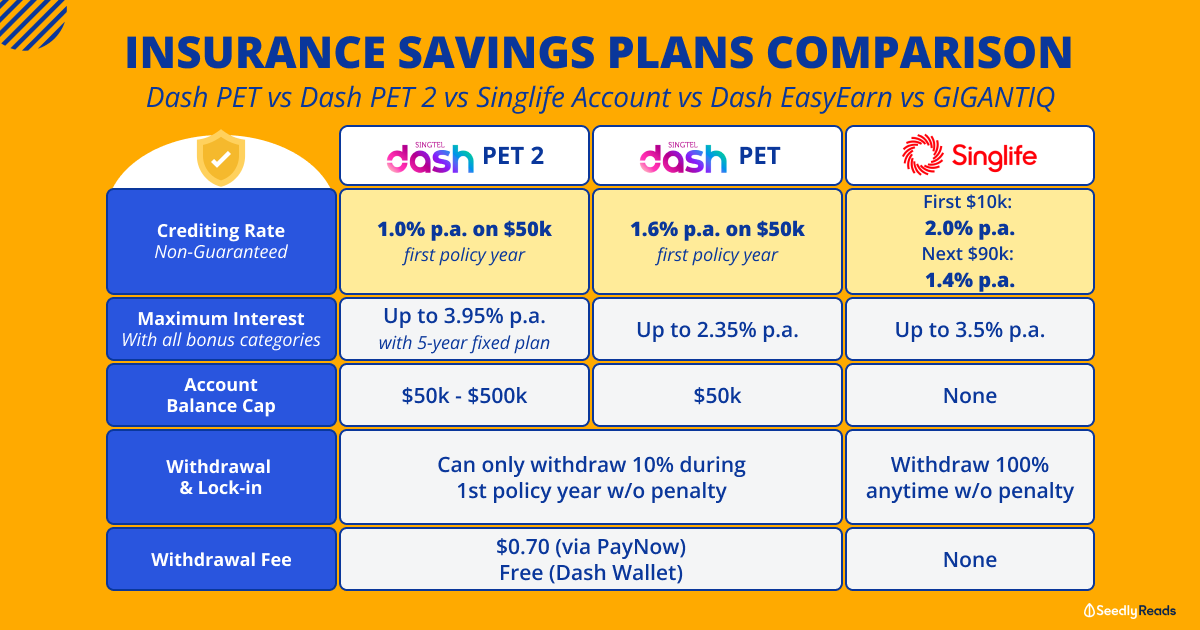Advertisement
Anonymous
Are investment-linked policies the same as insurance savings plans?
If they are different, what are your thoughts on some of the best ILPs out there? And also, what are some of the best Insurance savings plans?
TIA!
6
Discussion (6)
Learn how to style your text
PolicyPal
18 Jun 2020
Official Account at PolicyPal
Reply
Save
Nigel Tan
26 May 2020
Executive Senior Financial Planner at Great Eastern Life
They are completely different types of products.
ILPs investment value is based on the price & number of units of the fund at different periods that could fluctuate based on the market. It's considered higher risk in comparison to "savings plans".
However, unlike savings plans, you're able to choose your funds which you think would give you better returns in the long term versus the savings option. Also, most ILPs are lumped together with insurance which would incur an insurance charge. Think of it as a buy term invest the rest with the premium that you put in, except that the cost of term insurance increases as you get older.
Savings plans however, are lower risk in nature and often depend on the insurer's performance. The returns usually range from between 2-4% give or take, and are meant to keep pace with inflation rather than outperform it dramatically. The premiums placed with the insurer are usually invested in lower risk products (majority fixed income) as they generally handle a large pool of money with many policy holders Known as the participating fund. Savings plans have a guaranteed & non guaranteed return portion, whereby the guaranteed pays out regardless and the non-guaranteed portion depends on the overall performance of the fund over time. It has the feature of smoothing of bonuses, such that when there are good years (fund makes excess returns) not all of it is paid out and some are kept for rainy days / bad years (fund makes losses or not as great returns).
The best plans are typically the kind that work for you. Every person has different needs at different points in life. As long as the plan pays out when you need it the most to fulfill a certain financial objective (eg. kids education, house upgrade, retirement, car, business capital), I would certainly say thats a great plan.
Personally, I love the type of savings where there is no maturity date and the cash value grows indefinitely. I can stagger and withdraw partially and fully whenever I need it, allowing me to have more options Later on. I also wont have the problem of being "forced" to withdraw my money when I may not necessarily need it at a certain point and end up potentially buying another savings later on, incuring the cost of buying a policy twice (one at the beginning, one at the maturity date).
Reply
Save
Hey there!
They are both different products. Investment-linked policies (ILP) are an investment pro...
Read 4 other comments with a Seedly account
You will also enjoy exclusive benefits and get access to members only features.
Sign up or login with an email here
Write your thoughts
Related Articles
Related Posts
Related Products

Standard Chartered JumpStart Account
4.8
784 Reviews
Maximum Interest: 2.50% p.a. for balances up to S$50,000
INTEREST RATES
$0
MIN. INITIAL DEPOSIT
$0
MIN. AVG DAILY BALANCE

DBS/POSB Multiplier Account
4.3
328 Reviews

OCBC FRANK Account
4.7
213 Reviews
Related Posts
Advertisement








No, an investment-linked policy is different from an insurance saving plan, otherwise known as endowment plan.
For an investment-linked policy, the premium is put in a fund that will be invested by the insurance company. You will be able to determine your allocation of asset that will maximise your long-term return. While it might have a higher rate of return, you will also have to bear the risk of the market.
Endowment policy constitutes less risk and is normally use for goal-based saving, such as university tuition fees or retirement. Unlike investment-linked policy, your money is placed in the Insurance company participating fund. Endowment policies, however, have a guaranteed component which investment linked policies do not offer.
If you have any other queries, feel free to tag us in your questions.